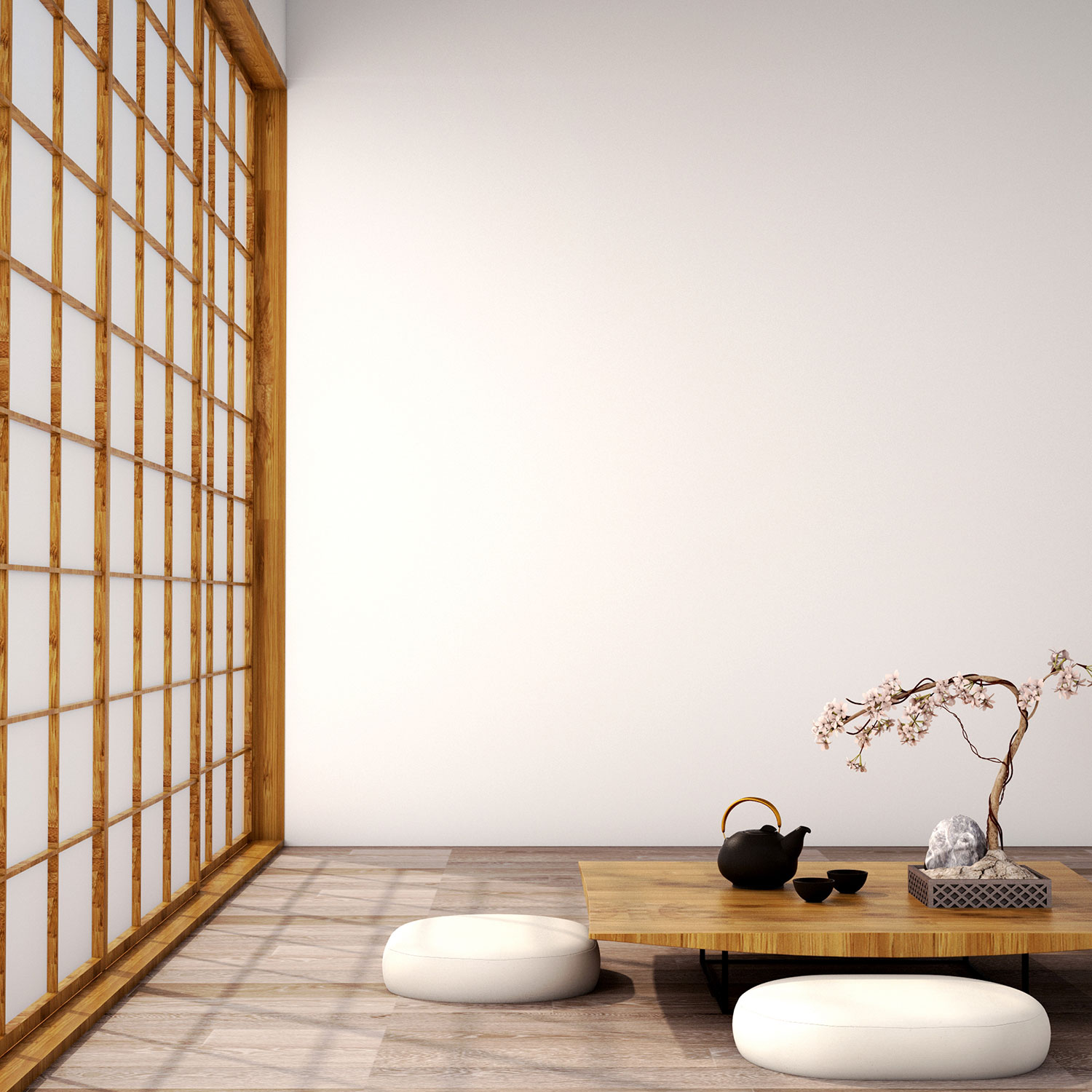

MASTER'S BOOK
WASABI-SABI STYLE INTERIORS – NEW TREND FROM JAPAN
What is wabi-sabi?
Japanese-style interiors are usually associated with a modest simplicity, neatness and harmony. Wabi-sabi makes room for imperfection, signs of age and of tear and wear. In this unusual philosophy, harmony stems from adjusting the interior to the inhabitants’ everyday lives rather than from the perfect order and symmetry. The Japanese trend has gained in popularity in the West, becoming an interesting alternative to e.g. Danish hygge.
Wabi-sabi philosophy
Wabi-sabi is more than an aesthetics trend. Just like hygge, it is a certain philosophy of life, which can be reflected also in interior design. Its main tenet is the natural way of forming the daily spaces and acceptance of imperfection. Wabi means a beauty hidden in simplicity and paucity, sabi stands for charm and elegance, stemming from the years that pass, and maturity. Wabi-sabi is based on a simple look at the reality and its acceptance just as it is – with all its imperfections. Japanese style needs no decorative elements, elaborate arrangements but a focus on what we have and a search for beauty in natural materials and old, time-worn items.
Wabi-sabi imperfect interiors
A chest of drawers with a scratched front, an arm-chair with a slightly threadbare padding, a chipped vase – in wabi-sabi interiors such objects, even if their signs of tear and wear are very well visible, become real show-pieces. Their authenticity enables creation of unique spaces, almost impossible to achieve in the world of mass production and artificial, straight-to-Instagram arrangements. Love of all things old and highlighting the signs of age is to a certain extent a sign of reconciliation with the natural cycle of life, ageing and passing. Contrary to the prevalent obsession with youth and perfection, it shows that old age, with everything it brings along, is no less charming, with its beauty and originality. The trend perfectly plays into the zero-waste philosophy, inviting to wring maximum efficiency of old and long-used equipment instead of buying new one.
Wabi-sabi – simplicity and nature hand in hand
Harmony with nature, which is one of the crucial elements of Japanese style, is more than care to reduce waste. Wabi-sabi loves natural materials, such as wood – preferably solid and with plenty of growth rings visible, discoloured stones and ceramics. Time-worn stone flooring is a perfect basis for a wabi-sabi interior created around a cracked wooden table destined for the garbage. Does it sound tough and rough? To add some homely warmth to the interior, a few soft accessories will do: a cotton tablecloth, soft cushions in linen cushion-cases or a woollen rug.
Colours in wabi-sabi interiors
Natural materials, most often used in raw versions, determine the colour scheme typical for wabi-sabi. Beige, brown, subdued yellow, orange and green, as well as the entire palette of grey, emphasise the close to nature interior style, increasing the warmth and cosiness factors.
Closeness and meditation
Considering how important a place authenticity and simplicity have in this trend, it is difficult to talk about designing wabi-sabi interiors. It is more of letting them live their own life, acquire signs of daily use and soak life history of their inhabitants, all of which contributes to their unique style and soul. Thanks to this, they become an ideal place to forge close relationships, they teach what is so important in the world of consumption and quest for eternal youth: acceptance of imperfection and time that passes.














